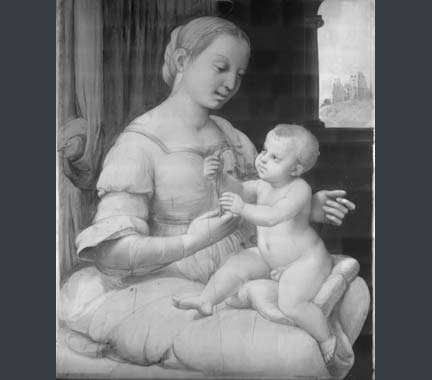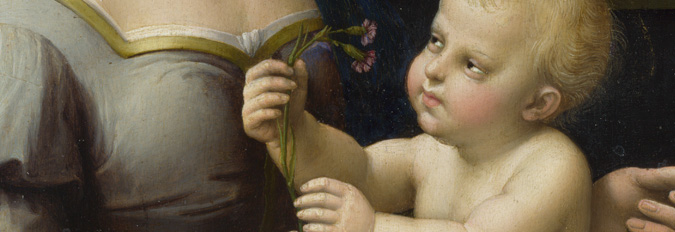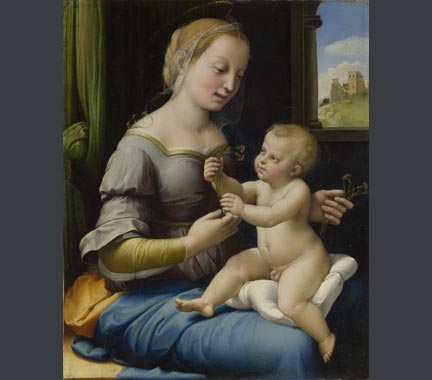Before beginning to paint, artists usually drew their compositions on a prepared panel or canvas. In the process of painting this drawing, known as an ‘underdrawing’, was covered with layers of paint.
This underdrawing was intended to remain invisible. However, infrared radiation can penetrate certain colours, allowing us to see the drawing beneath the paint.
Infrared examination: 'Madonna of the Pinks'
Infrared examination of Raphael’s Madonna of the Pinks reveals a particularly fine example of an underdrawing, executed in the delicate medium of metalpoint.
The painting depicts the youthful Virgin playing with her child, shown in unusually cool and muted colours. The figures and drapery are freely outlined, with Raphael’s characteristic loops for toes and arcs for knuckles, along with careful hatching to denote areas of shadow.

Raphael followed the principal outlines of the underdrawing closely in his painting, but he also made several changes, in particular to the bodice of the Virgin's dress. The picture was famous in the mid-19th century, but was subsequently considered to be only one of many copies of a popular composition.

The Madonna of the Pinks was rediscovered as the original painting by Raphael in 1991. This attribution was supported by the technique and style of underdrawing, comparable in particular with that of Raphael’s Garvagh Madonna.
In addition, the free hand and inventiveness shown in the underdrawing are not compatible with the painting being a copy.


